Comprehensive Pharmacology Exam: Questions and Answers with Rationale
VerifiedAdded on 2023/06/15
|5
|957
|229
Quiz and Exam
AI Summary
This document presents a series of multiple-choice questions related to pharmacology, covering various topics such as drug dosing, drug interactions, pain management, antibiotic therapy, and respiratory treatments. The questions address specific clinical scenarios, requiring an understanding of appropriate medication choices, potential adverse effects, and patient-specific considerations. Topics include azithromycin dosing, pain management strategies for elderly patients, treatment of pediatric fevers and UTIs, antibiotic selection during pregnancy, management of glaucoma and fungal infections, and the use of medications for asthma and upper respiratory infections. The answers provided offer insights into the rationale behind the correct choices, highlighting key pharmacological principles and clinical guidelines. Desklib is a valuable resource for students seeking past papers and solved assignments to enhance their understanding of these concepts.
1 out of 5
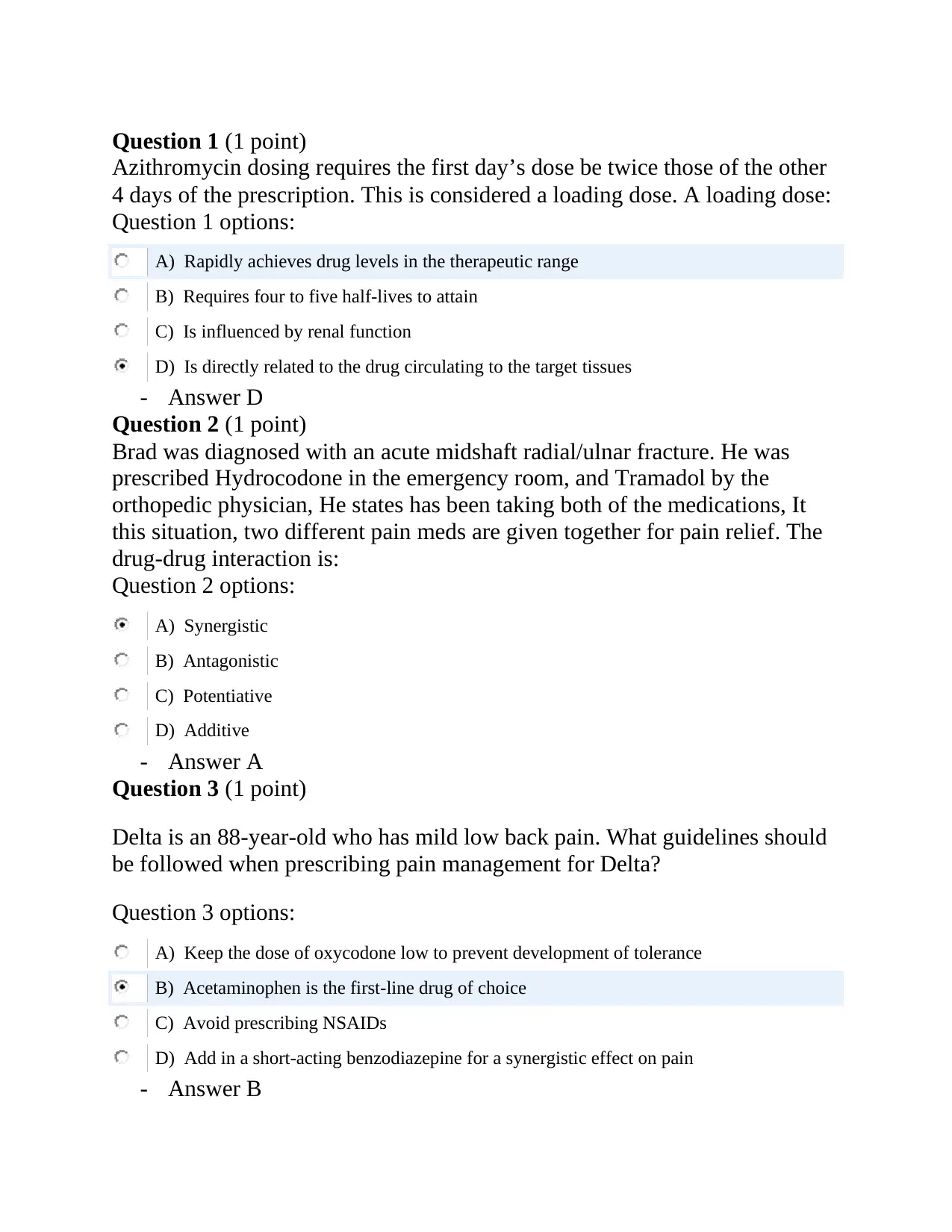
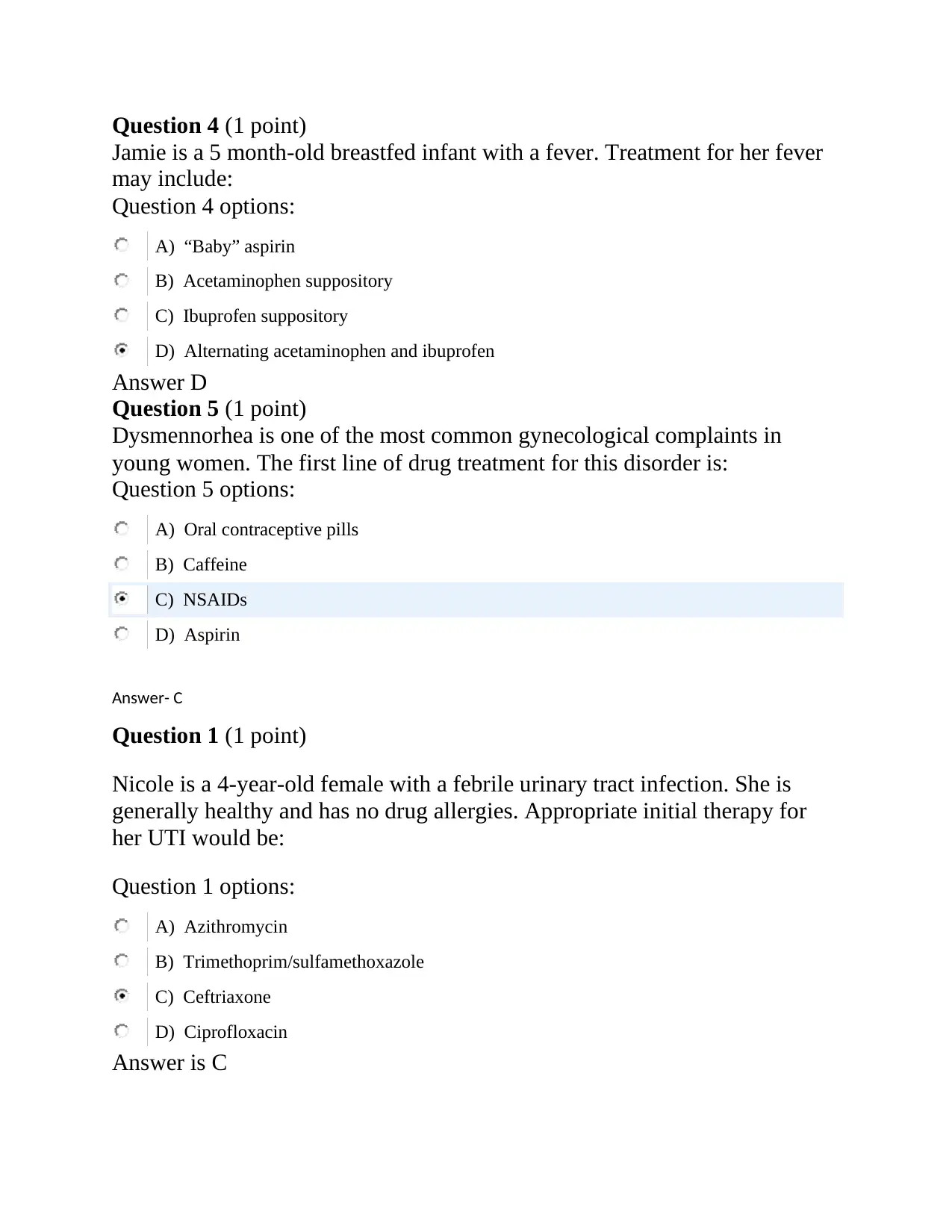
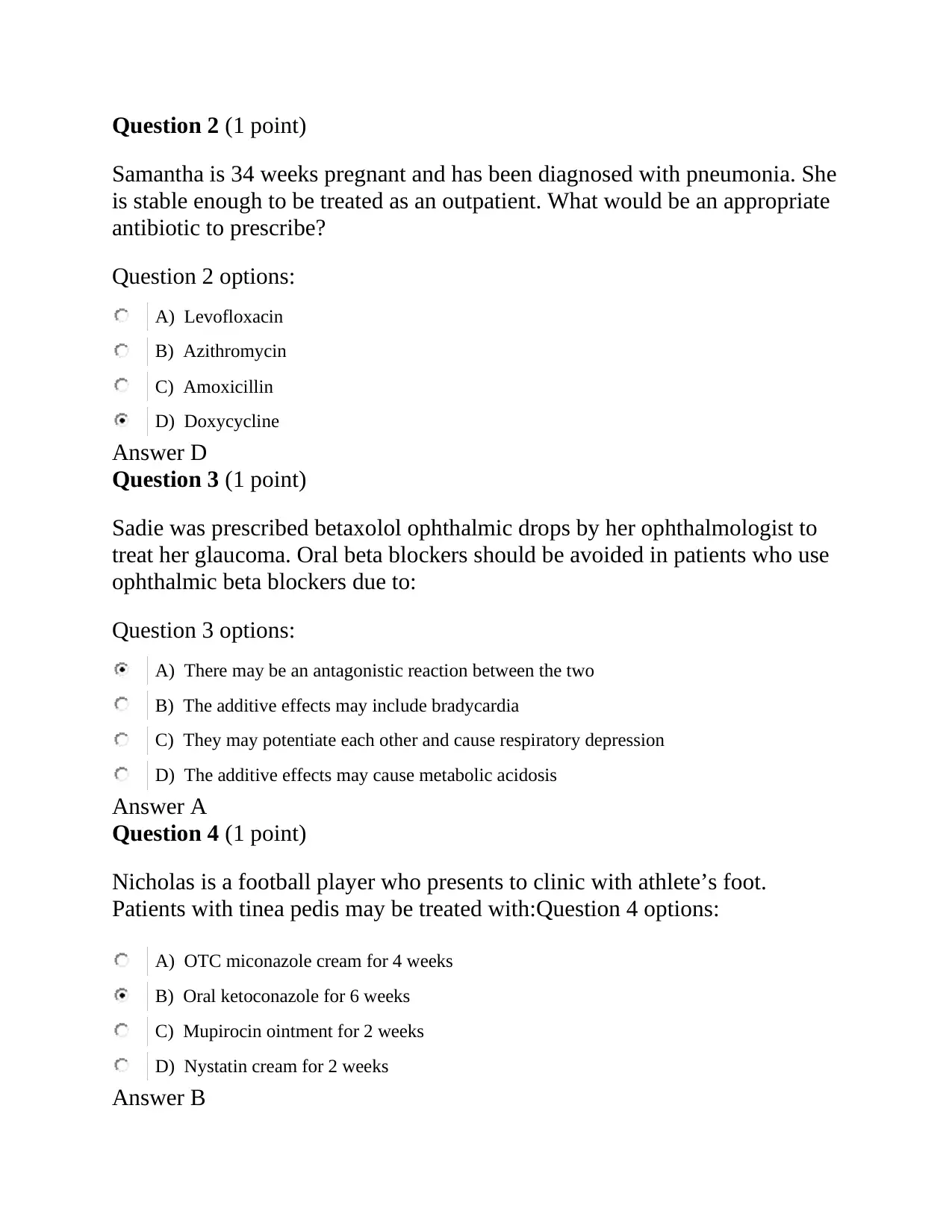

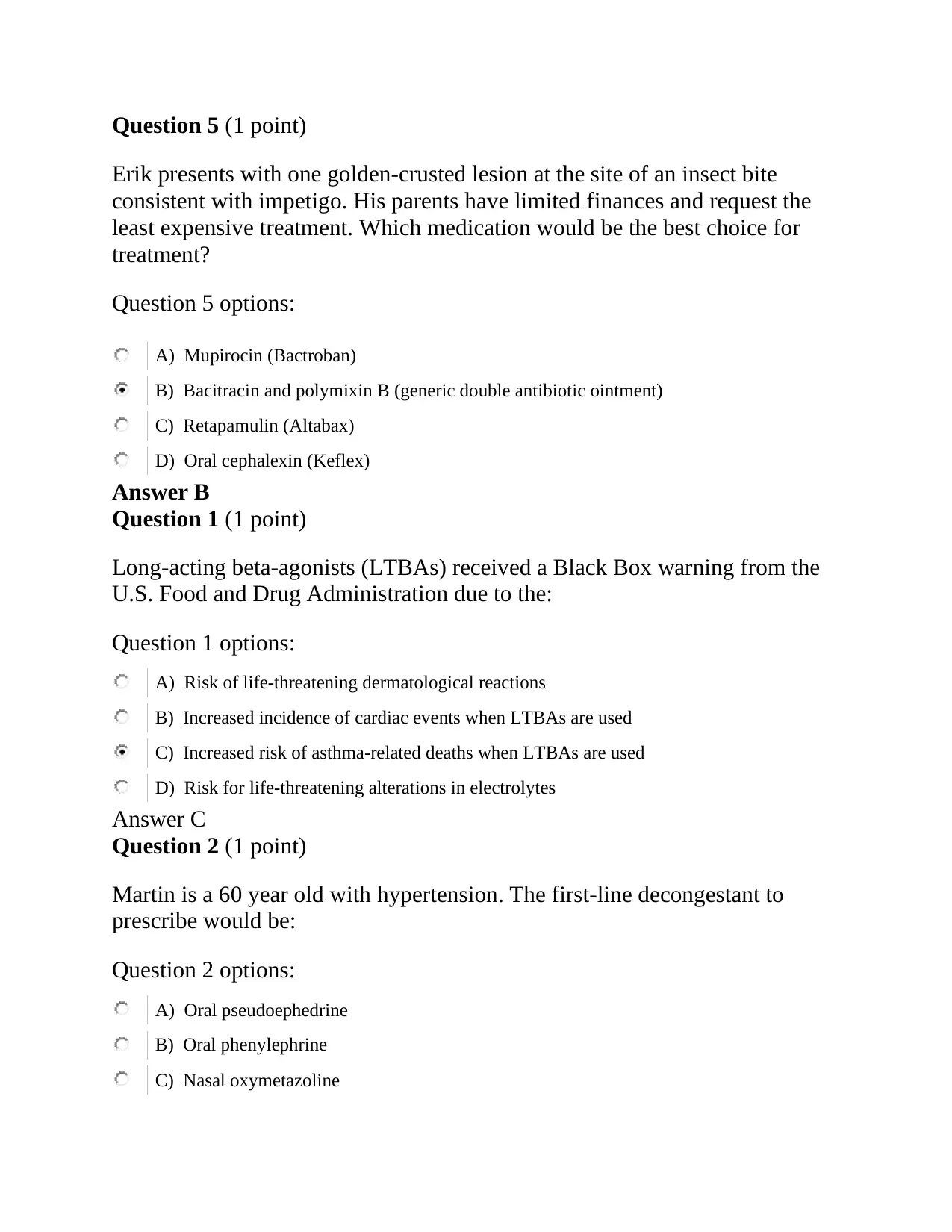
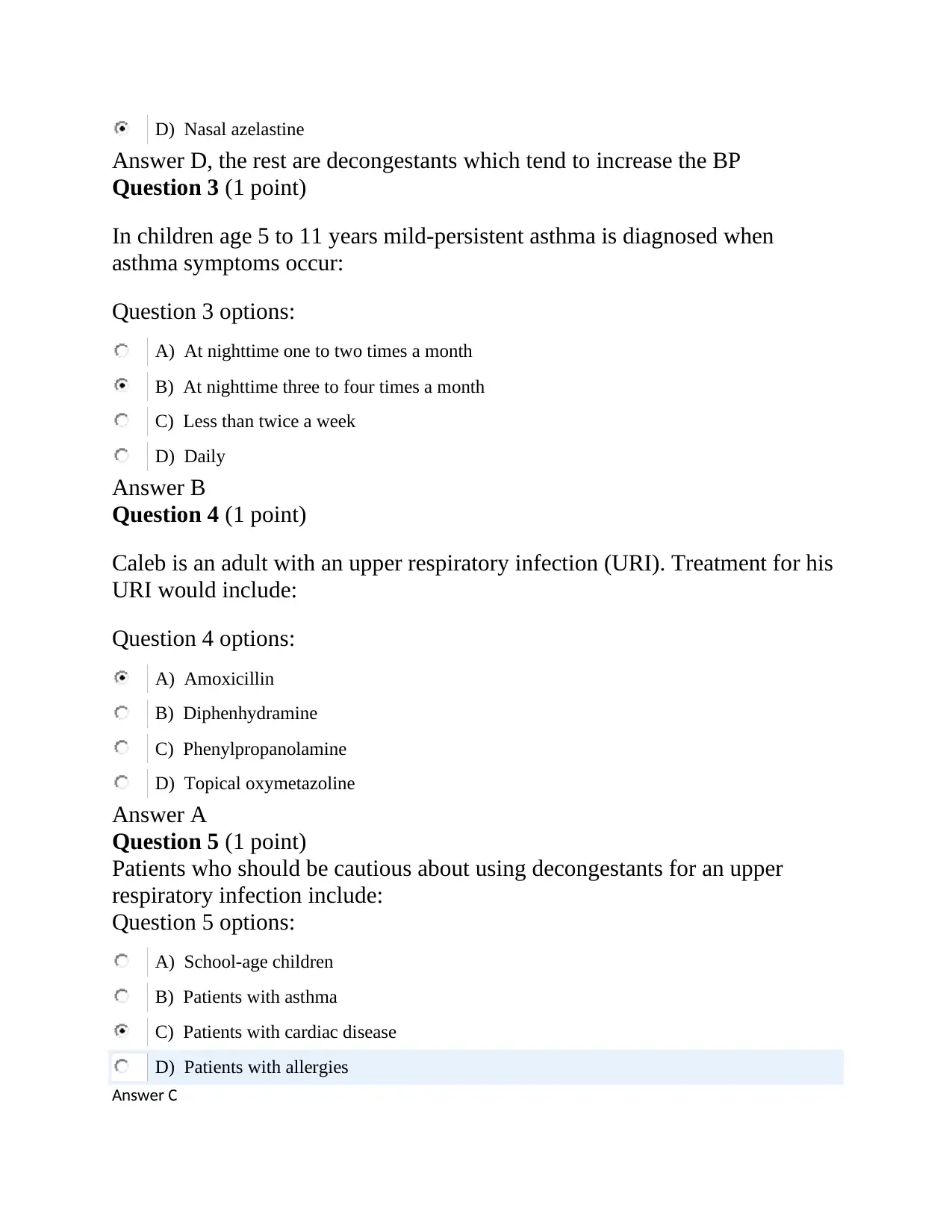


![[object Object]](/_next/static/media/star-bottom.7253800d.svg)